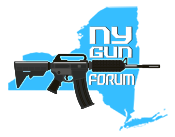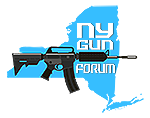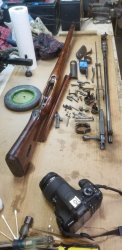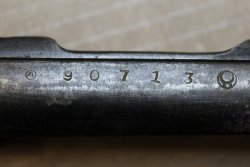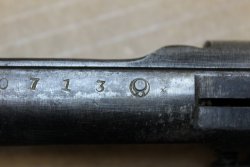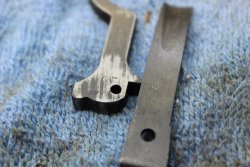You are using an out of date browser. It may not display this or other websites correctly.
You should upgrade or use an alternative browser.
You should upgrade or use an alternative browser.
Name that rifle...
- Thread starter Shadow rider
- Start date
meketrefe
.450/400 Nitro Ex
Enemy at the gates airsoft conversion!
GOYABEAN
.950 JDJ
Arisaka 

That_FNG
.308 Win
Clearly it’s an AR15 weapon of Ass destruction. I learned that on CNN
repete
.338 Win Mag
A Cannon camera ! The other stuff
! The other stuff  .
.
 ! The other stuff
! The other stuff  .
.gun_slinger_boy
.338 Win Mag
A garbage rod variant?
nortatoga
.338 Win Mag
Just Gun Parts!!
kev74
20×102mm Vulcan
Fred?
Shadow rider
6.5 Creedmoor
Arisaka
Ding-ding-ding...
Give the man a Kupe-doll!
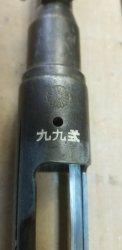
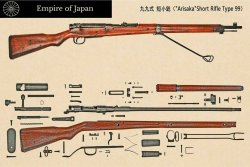
Type 99 Arisaka assault rifle. I'm still researching the age and arsenal data, but it appears to be an early model with a clean chrome lined barrel and all the indications are that it was not a "Last Ditch" rifle. It's missing the firing pin spring but otherwise is complete and all numbers and markings are matching. Unfortunately I don't own it. I took on the project for a friend who still hasn't given me the back story on how it came to him. He also has a sweet WWII Nazi Luger I hope to talk him into letting me tear apart when this one is done!
1075tech
.338 Win Mag
It's a Type 99. 7.7x58. Look at the serial number on the left side of the receiver. The kana before the numbers will tell you what series. The symbol after the numbers will tell you what arsenal. Show me a picture of that and I can tell you the series/arsenal and the approximate time of manufacture. I'm going to guess that it's an early Nagoya, later 1st to 5th series.
Hopefully the screws were not still staked before you tore it apart.
Oh, and it's not an assault rifle but would actually qualify for a "weapon of war".
Firing pin springs are available.
Depending on series and arsenal, the last three digits of the serial number should be found on the bayonet lug, bolt handle, safety, firing pin, extractor, and dust cover.
Since it retains the mum, and you report that the numbers match, it has value to the collector. Not sure why you would tear it down like that but DO NOT sand or refinish the stock if you want to retain it's value.
If for some asinine reason you do sand the stock, the original finish is made of ushuri. A Japanese plant with similar oils as poison ivy
Hopefully the screws were not still staked before you tore it apart.
Oh, and it's not an assault rifle but would actually qualify for a "weapon of war".
Firing pin springs are available.
Depending on series and arsenal, the last three digits of the serial number should be found on the bayonet lug, bolt handle, safety, firing pin, extractor, and dust cover.
Since it retains the mum, and you report that the numbers match, it has value to the collector. Not sure why you would tear it down like that but DO NOT sand or refinish the stock if you want to retain it's value.
If for some asinine reason you do sand the stock, the original finish is made of ushuri. A Japanese plant with similar oils as poison ivy
Last edited:
1075tech
.338 Win Mag
Ballistically, the 7.7x58 is on par with the 303 British. The base peep sight on the Type 99 was set at 300 meters.
The Type 99 followed Type 38 6.5x50. Initial production was a rifle of similar length as the 38. These are known as the 99 Long Rifle. Only about 30k were made. I used to have a Nagoya T99 Long. There were only about 8200 made by the Nagoya Arsenal, with the balance made at the Kokura Arsenal.
The serial number system only used blocks of 100,000. Then they would start over with a new series number. Since they would start at zero, there are known examples without serial numbers, just a series number.
Your example still has a dust cover and the monopod. These are often missing and were not included in later production. The chrome lined bores was also discontinued later in the war.
The Type 99 followed Type 38 6.5x50. Initial production was a rifle of similar length as the 38. These are known as the 99 Long Rifle. Only about 30k were made. I used to have a Nagoya T99 Long. There were only about 8200 made by the Nagoya Arsenal, with the balance made at the Kokura Arsenal.
The serial number system only used blocks of 100,000. Then they would start over with a new series number. Since they would start at zero, there are known examples without serial numbers, just a series number.
Your example still has a dust cover and the monopod. These are often missing and were not included in later production. The chrome lined bores was also discontinued later in the war.
Shadow rider
6.5 Creedmoor
Shadow rider
6.5 Creedmoor
BTW it's a short version with a 25 1/2" barrel'
1075tech
.338 Win Mag
You are correct. 3 series Nagoya. Late in the series. The numbers would have gone to 99999. Then the 4th series.
Those are various inspection marks. The "w" looking one is common among Nagoya produced rifles.
I'll have to look at my reference material tomorrow to see what quarter of what year it was made. That's about as close as you can get to a production date since we bombed the factories and most of the records were destroyed
ETA: 4th quarter of 1942 for a likely production date. You could surmise that, since it's in the last 10,000 of 100,000 made that quarter, possibly December '42/January '43.
Those are various inspection marks. The "w" looking one is common among Nagoya produced rifles.
I'll have to look at my reference material tomorrow to see what quarter of what year it was made. That's about as close as you can get to a production date since we bombed the factories and most of the records were destroyed
ETA: 4th quarter of 1942 for a likely production date. You could surmise that, since it's in the last 10,000 of 100,000 made that quarter, possibly December '42/January '43.
Last edited:
1075tech
.338 Win Mag
If you look at the bottom of the stock, if it hasn't been sanded, you should be able to see one, possibly two, inspection stamps behind the lower wrist tang.
Most common is "ij" and another possibility looks kind of like a backwards f.
@RiceDrizzle might be able to explain better. The "Na" and "chi" marks were common - "Na" used for Nagoya, and "chi" used for the Chigusa factory that was under Nagoya supervision
If you join the forum over at gunboards.com, the Japanese collectors forum has a couple of members who literally wrote the books on Japanese weapons and collecting.
Most common is "ij" and another possibility looks kind of like a backwards f.
@RiceDrizzle might be able to explain better. The "Na" and "chi" marks were common - "Na" used for Nagoya, and "chi" used for the Chigusa factory that was under Nagoya supervision
If you join the forum over at gunboards.com, the Japanese collectors forum has a couple of members who literally wrote the books on Japanese weapons and collecting.
RiceDrizzle
.38 Special
The letter you see next to the serial number is "名” which is the first letter when writing out Nagoya in Japanese (名古屋).
Last edited:
4WHLDRFTN
.308 Win
(名古屋).
how'd you get pics of one armed row boater, windmill and chimney

Shadow rider
6.5 Creedmoor
I thought it was some dude surfing!
SmallGameAddict
.308 Win
Nice camera!
